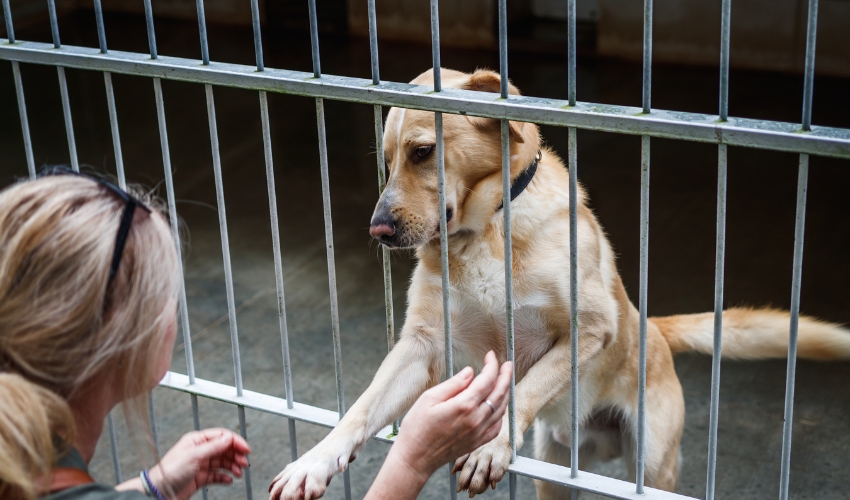Dogs are comparatively prone to fractures because of a number of anatomical, behavioral, and lifestyle variables. Dogs may suffer from trauma, accidents, or underlying medical disorders that result in fractures, which can cause discomfort, immobility, and a reduced quality of life. A comprehensive strategy is used to treat fractures in dogs with the goals of maximizing functional recovery, fostering healing, and restoring structural integrity. In veterinary medicine, fracture repair procedures have advanced dramatically, providing a variety of surgical and non-surgical treatments customized to meet the individual needs of each patient.
What are the several reasons why fractures are common in dogs?
- Trauma: Dogs are energetic creatures that enjoy a variety of physical pursuits, such as playing, running, jumping, and exploring. This puts kids at risk for traumatic injuries from things like falls, collisions, and car or animal-related mishaps. One of the most common causes of fractures in dogs, especially in younger, more active breeds, is trauma.
- Accidents: Dogs can get into mishaps both inside and outside of their homes. Typical mishaps include falling from great heights, getting hit by falling items, getting stuck in doors or equipment, and getting hurt when playing rough with other animals.
- Overexertion: Excessive physical activity, particularly in working dogs, athletes, or those involved in agility or competitive sports, can occasionally result in stress fractures or repetitive strain injuries in dogs.
- Osteoporosis: Some dogs, especially the elderly or those with specific medical disorders, may experience bone weakening or osteoporosis, which makes them more prone to fractures from small trauma or falls.
- Bone illnesses: Dogs with certain bone illnesses, such as hypertrophic osteodystrophy, osteogenesis imperfecta (brittle bone disease), and osteosarcoma (bone cancer), are more likely to fracture because of their defective bone structure or weakness.
- Genetic Factors: Deformities including luxating patella, hip dysplasia, and elbow dysplasia can cause aberrant joint structure and biomechanics, which raises the risk of musculoskeletal injuries and fractures in affected dogs.
- Nutritional Imbalances: Inadequate diet or deficiencies in vital nutrients, including calcium, phosphorus, and vitamin D, can hinder the growth and strength of bones, making dogs more vulnerable to skeletal abnormalities and fractures.
- Age-Related Changes: As dogs get older, their bone density, strength, and resistance may alter, making their bones brittle and more prone to fractures.
In general, a variety of reasons, such as trauma, accidents, genetic susceptibility, and underlying medical disorders, can cause fractures in dogs. In order to reduce their dog’s risk of fractures and encourage general musculoskeletal health, dog owners must provide a safe environment, suitable supervision, and preventative healthcare. Consistent veterinary examinations, appropriate diet, and activity supervision can also aid in identifying and mitigating possible risk factors for canine fractures.
What are the different repairs and treatments for bone fracture in dogs?
Dogs with bone fractures need to be treated with a comprehensive strategy that takes into account their general health and functional requirements, in addition to the particular form and severity of the fracture. Orthopedic surgeons in veterinary medicine are qualified to diagnose fractures and suggest the best course of action. The following are a few typical techniques for treating canine bone fractures:
Immobilization and Closed Reduction:
- With closed reduction, the broken bone pieces are manually realigned without the need for surgery. After realigning, the broken limb is immobilized with braces, casts, or splints, among other external fixation methods. Depending on the degree of the fracture, immobilization allows the bone to mend gradually over several weeks to months. To avoid more harm, the dog’s activities might be limited at this time.
Internal Fixation and Open Reduction (ORIF):
- In order to precisely realign the fractured bone fragments, open reduction entails surgically exposing the fracture site. After that, internal fixing procedures are performed to stabilize the fracture and promote the best possible recovery. To hold the broken bone pieces in place, implants such as wires, screws, plates, pins, or intramedullary (IM) nails may need to be inserted.
- Compared to external fixation techniques, internal fixation offers more robust fracture stability, enabling earlier mobilization and a speedier recovery.
External fixation of the skeleton (ESF):
- In order to stabilize the fracture, external skeletal fixation entails inserting pins or wires into the bone fragments on either side of the break. These pins or wires are then attached to an external frame or bar outside the body.
- When internal fixation may not be possible or when the fracture needs to be stabilized temporarily before receiving more extensive care, ESF is frequently utilized.
Bone Substitutes and Grafting:
- To encourage bone repair and regeneration in cases of severe or comminuted fractures (when the bone is fractured), bone grafting techniques may be used.
- To fill up gaps or promote bone growth at the fracture site, bone grafts can be made from the patient’s own bone (autograft), donor bone (allograft), or synthetic bone replacements.
Rehabilitation of the Body
- Physical therapy is an essential component of the healing process after fracture treatment. Rehabilitation therapies that improve muscular strength, joint mobility, and general function of the damaged limb include hydrotherapy, controlled weight-bearing activities, and range-of-motion exercises.
- Customized rehabilitation programs may be created by licensed canine rehabilitation specialists or physical therapists based on the demands and recovery status of the dog.
Monitoring and Pain Management:
- Pain management, which includes the use of analgesic drugs, local anesthetics, and non-pharmacological techniques to reduce pain and suffering, is a crucial part of treating fractures.
- Throughout the healing process, the dog’s progress must be closely monitored to ensure adequate alignment, bone union, and resolution of any difficulties. This monitoring should include radiographic evaluations, clinical examinations, and assessments of limb function.
In conclusion, treating a dog’s bone fractures is essential to reducing discomfort, averting further issues, regaining function, and enhancing the dog’s quality of life in general. Successful fracture management is contingent upon timely veterinary intervention, appropriate fracture stabilization, and extensive rehabilitation efforts. These components work together to optimize the dog’s health and well-being.











